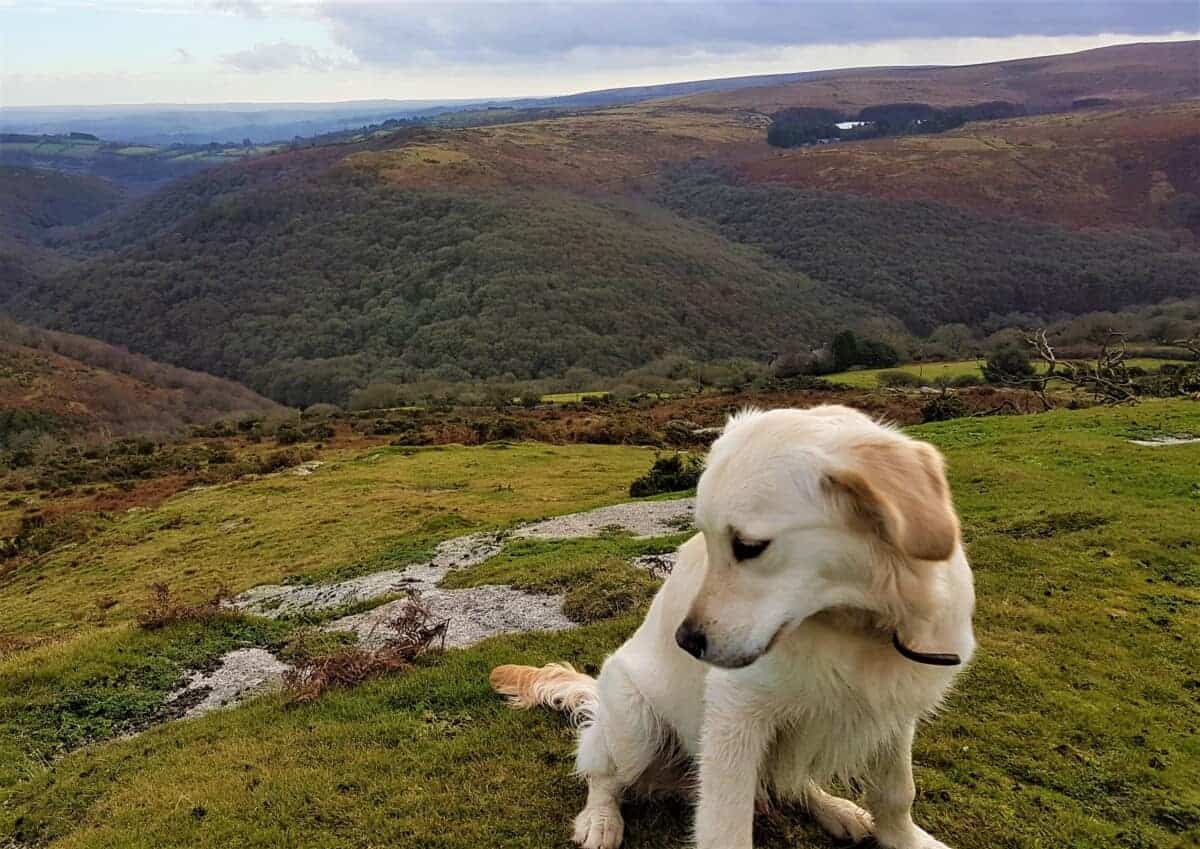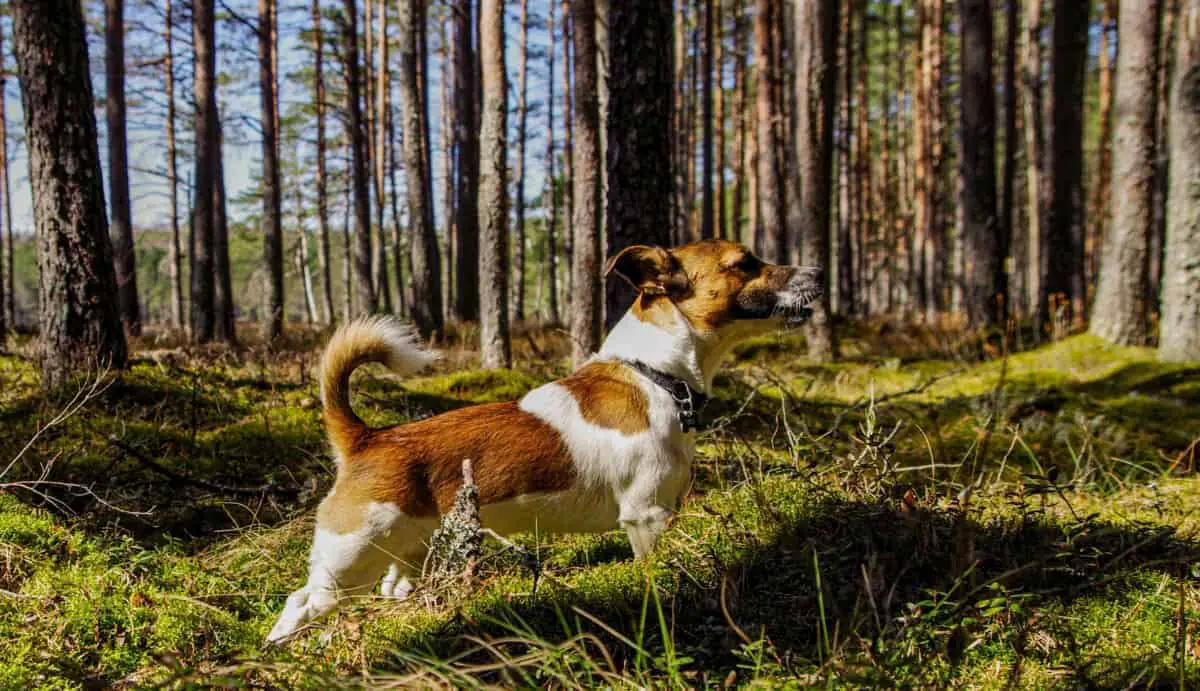Tail wagging amongst dogs is one of the most recognizable characteristics associated with them. Dogs convey many emotions using their tails and so this leads on to the question of whether they are able to control their tails or is it simply instinct.
Dogs can control their tails on a biological level, wagging them whenever they feel the need. Despite this biological control dogs may not notice they are wagging their tails and may uncontrollably wag them during times of excitement.
Because tails tell us so much about our dog’s emotions, especially at the time they are using them, it can be possible to see whether your dog is controlling their tail or not. This article explores what to watch for and the reasons behind tail wagging.
Contents
Tail Movement Through Muscle Control
It’s easy to think that your dog’s tail is purely made from muscle, however, this would be incorrect. Your dog’s tail is in fact an extension of their spine, joined at a slight angle. Although the dog’s tail is mostly made of bone, it is enclosed in muscle allowing it to serve multiple purposes.
As highlighted above, biological evidence suggests that your dog certainly has control of its tail. Total control is something that is not fully agreed upon. Despite this, your dog’s tail is an important feature and is so much more than an emotional response tool. An interesting book to read is, “The Anatomy Of The Dog”, for more detail about what this structure looks like.
The muscles surrounding the tail including the one that joins it to the spine can give various movements. these movements serve towards helping your dog balance, turn, jump and even swim. if you happen to be playing with your dog this becomes highly evident. As an example, my golden retriever will rotate his tail only when running downhill, not up not on the flat only down. This indicates to me he is creating some kind of force at the back, preventing him from rolling forwards and down the hill.
Muscle control allows dogs to move their tails up, down, left, right, and even curl them at very tight angles. Although your dog will most likely use their tail to balance when carrying out various activities, conscious thought must be instinctive by the time they get to adulthood. Comparing this behavior to that of humans, we learn to walk or ride a bike with complete consciousness in the early stages. Now that you have learned to walk or ride a bike, you don’t move around thinking about where to put your foot or how to keep your body from toppling to one side on a bike.
Despite biology allowing dogs to control their tails, it’s not always obvious when their control is conscious or not. Try seeing how your dog uses their tail in different scenarios and make a judgment on what you believe is conscious control and just pure instinct.
Why Do Dogs Chase Their Tail
Some owners might question that if dogs control their tails, why do they chase them as if independent from their bodies. It’s a good question and as dog lovers, we can only analyze the behavior from what we see on the surface.
As discussed above, your dog’s tail is biologically controlled using muscles and connections to the spine, so there must be conscious control of some sort. Tail chasing is most likely down to fun and games, as we see this behavior mostly in puppies. As we know puppies are playful characters and curiosity is often what spurs them on, the experience of something like a tail must be hard to resist.
It’s not totally clear how much effort it takes your dog to bend a tail towards its head. Most humans wouldn’t be able to bring their feet up to their faces and so expecting a dog to do something similar isn’t fair.
Although playing is the most likely cause of tail chasing, be sure to know whether your dog is not trying to bite their tail. This can also be due to play, but on occasions could be some kind of injury or skin irritation. Check out our article on “Why Do Dogs Bite Their Tails” for more information on this subject.

Can Dogs Hurt Their Tails
Dogs can hurt their tails. If you accidentally stand on a dog’s tail they will often yelp or move sharply away from you.
It’s not uncommon to have dogs hurt their tail as it’s such a prominent part of them. often when they are sitting or lying on the ground, their tail will stick out and be subject to any accidents that occur. Dogs also love to stand under our feet, whether we are cooking or talking to someone, your dog is most likely there.
Signs of damage can include, splitting, cuts and kinks. If you suspect your dog has hurt their tail, then contacting your veterinarian will be the best course of action, they will be able to determine what injury has been sustained.
How Do Dogs Communicate With Their Tails
As highlighted earlier, dogs can move their tails in various ways and communication is a big part of this. Despite using their tails for physical things such as balance, expressing emotion is one the most common use for their tails. As part of fully understanding how dogs control their tails, let’s look at some of the ways they use them to communicate.
Communicating Happiness
This is probably the easiest one to notice and is commonly referred to as the wag. Side-to-side motion often indicates your dog is happy or excited about something. Anticipation can also cause your dog to wag their tail slowly, waiting for their dinner or something else they love.
Communicating Fear
Fear is a difficult emotion to identify and it may not appear as you think. Usually if a dog is fearful they generally appear more cautious, slowing its movement down. A dog’s tail could be seen curled downwards, even going between their back legs. A similar action is done when they are in submission or being told off, which in some ways is a type of fear.
Communicating Aggression
Certainly, something to look out for, especially amongst dogs you do not know. Aggression can sometimes manifest with a very straight tail that lines up with the dog’s back. Another clue could be the hairs on their back and tail standing up, be wary of dogs in this position, they are clearly uncomfortable.
Communicating Dominance
Signs of dominance through tail positioning are not uncommon but can go unnoticed. Tails that point directly upwards show that your dog is feeling confident and perhaps about to show off. From experience, my dog has his tail up around some dogs but others it will be down and it seems to be true that a vertical tail signifies some sort of dominance. My dog even starts to walk differently, with its pace turning it more of a bouncy strut.
Conclusion
Is easy to see why owners question whether a dog can control their tail or not. After all, dogs don’t speak any English and so being able to consciously use their tail to communicate emotion as well as balance and swim are important. If you enjoyed this article check out some of our other content on the homepage.

